These fall leaf activities for kids are a perfect way to study nature throughout the season. Easy to implement and enjoyable for the entire family, this study has options for all ages.
“Make the lesson an investigation and make the pupils feel that they are investigators…The ‘leading thought’ embodies some of the points which should be in the teacher’s mind while giving the lesson; it should not be read or declared to the pupils…The outlines for observations herein given by no means cover all of the observations possible; they are meant to suggest to the teacher observations of her own, rather than to be followed slavishly…If the questions do not inspire the child to investigate, they are useless.”
Handbook of Nature Study, page 23
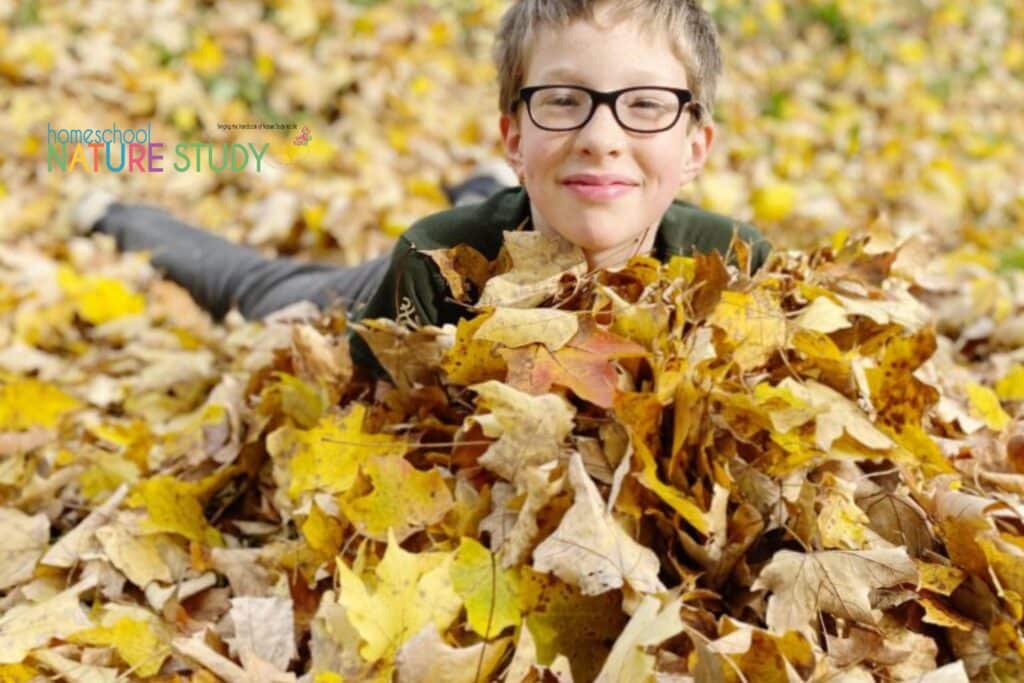
photo by Amy Law
Fall Leaf Study – Close Up Investigation
Inside Nature Study Preparation Work:
- Read in the Handbook of Nature Study pages 9-10 (The Lens, Microscope, and Field Glass As Helps in Nature Study).
- Have on hand a magnifying glass to use as part of this leaf challenge. You can see more ideas in our 5 Ways to Use a Magnifying Lens in Homeschool Nature Study.
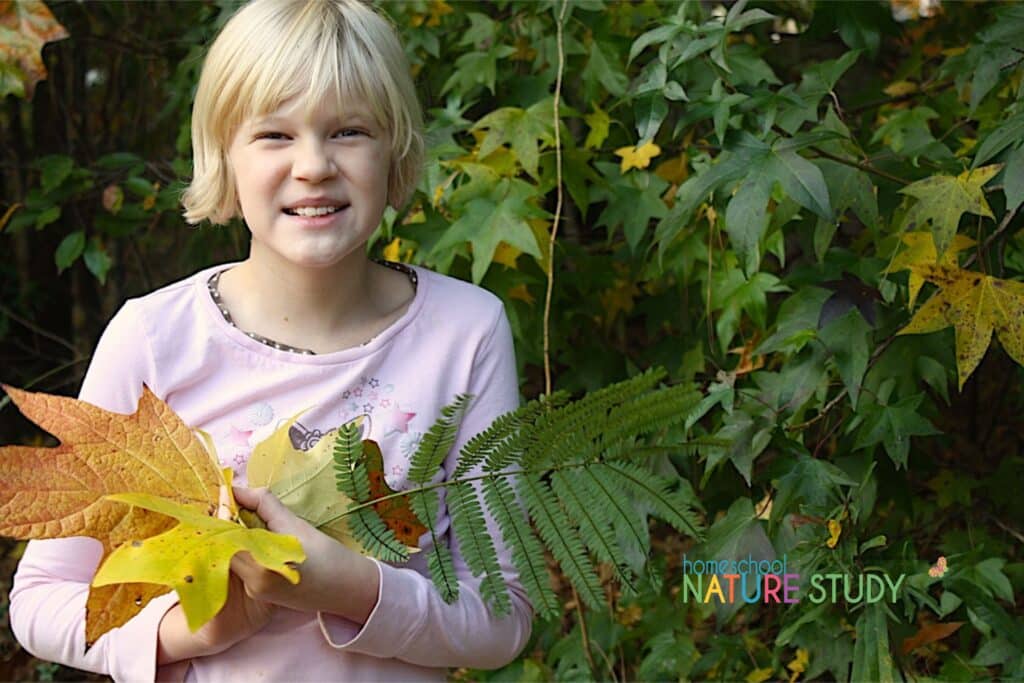
Leaf Study Outdoor Hour Time:
- Spend your Outdoor Hour time in your own backyard or neighborhood.
- Look at the various kinds of leaves and have your child point out several that capture their interest.
- Choose four or five leaves to collect and bring home to look at with the magnifying lens.
Follow-Up Activity for Fall Nature Study:
- Use the hand lens to make careful observations of your leaves. One at a time have your child describe what he sees as he looks at the leaf carefully. Record your results in your nature journal (or use the notebook page in the ebook).
Advanced and High School Leaf Studies
- Advanced Follow-Up: Use this LINK and scroll down to the section, “Taking a Closer Look At Plant Cells”. Make your own leaf slides to look at under your microscope. Members – Use the Leaf Morphology page and the notebook page to complete your study.
- Advanced Follow-Up: Read this article on Wikipedia: Leaf. Read this page that illustrates Leaf Margins and Shapes (love this page with the clear images).
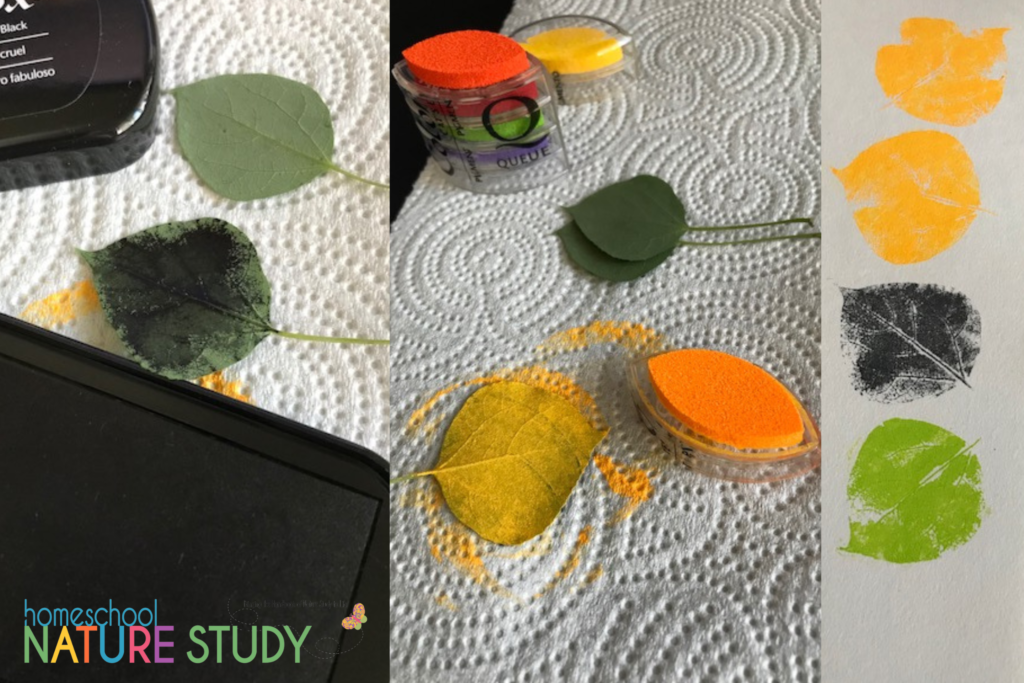
Activities for Pressing Leaves and Leaf Nature Study
Press your leaves to add to your nature journal at a future date. You can watch my YouTube video to learn how to do this with simple household items.
Creating Leaf Prints Nature Activity
The Ultimate Guide to Fall Leaf Activities for Your Homeschool
Make beautiful Leaf Prints with Victoria in Homeschool Nature Study Nature Crafts course!
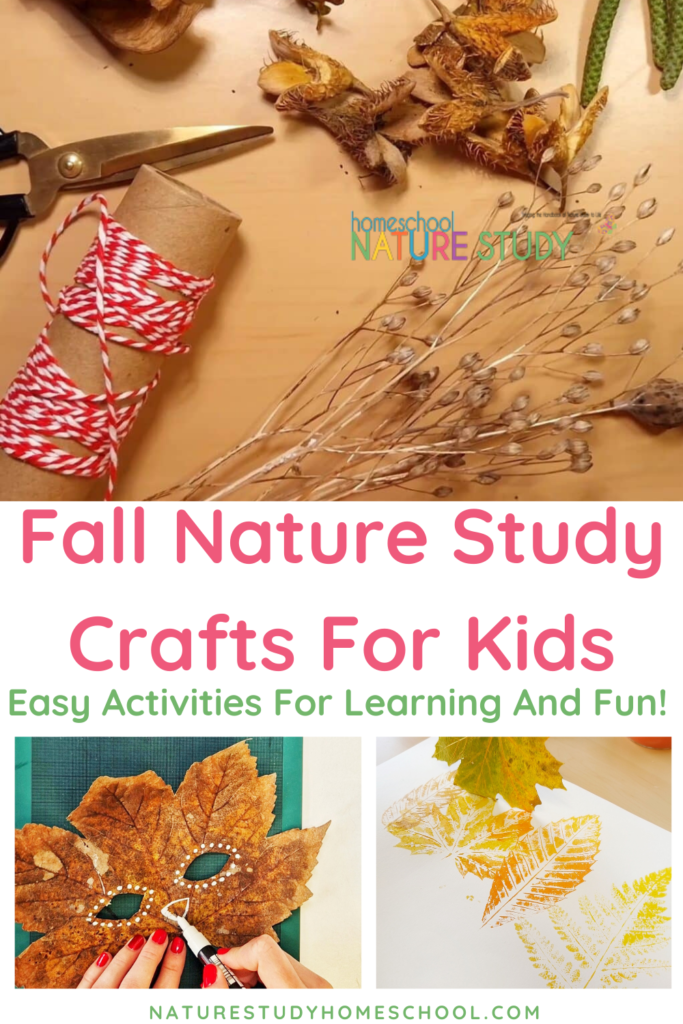
Fall Garland Craft
Autumn is in full swing with rusty leaves and seeds galore, so let us bring in some of the season’s beauty with this Autumn garland.
An Example of a Family Fall Leaf Study for All Ages
Tricia’s shares their family-style fall leaf study up close investigation!
Our leaf studies started when the first leaves started to change. We enjoyed the fall colors with a local trip to Kennesaw Mountain Battlefield Park. We’ve awed each week at the maple at church, watching it turn every beautiful shade from green to yellow to red.
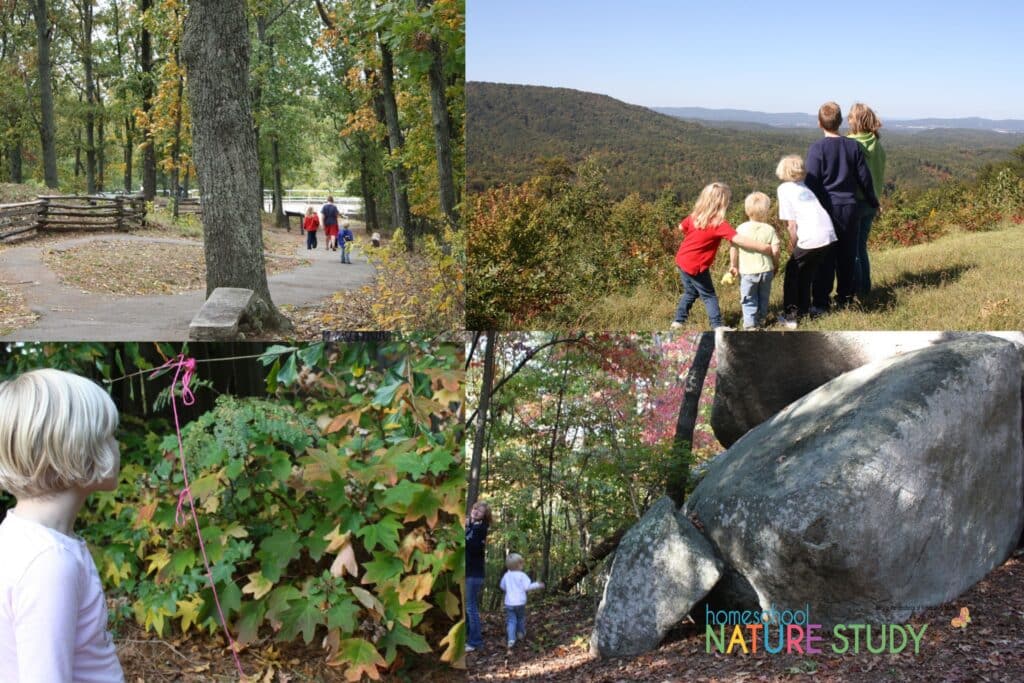
One Saturday, we traveled to the next state over to the highest point. We walked and we slowed to soak in the colors.
And earlier this week, we drove about 20 minutes down the road, where we climbed rocks as big as boats under a canopy of colors.
While we’ve been oohing and aahing this whole month at leaves, we didn’t stop to marvel closely at design until we took the Up-Close Leaf Study Challenge with The Handbook of Nature Study Outdoor Hour Challenges.
And while gorgeous leaves had gathered on the kitchen table now and then in an arrangement, Friday morning Middle Girl and I went out early for the very purpose of gathering a variety. Maple, poplar, river birch, oak leaf hydrangea, mimosa.

And while we were out, she spotted our spider.
It had just started to make a new web, using part of the pink string someone had tied.
With our notebook pages at the ready, we hit a problem. Where is the magnifying glass? We couldn’t even find the little plastic one kept in the outside playhouse. *Sigh* “I know!” Middle Girl said, “There’s an app for your iPhone. And I think it’s free.” After a quick search, we downloaded Magnifying Glass with Light and we were in business!
Looking first at a larva on the mimosa leaves…
…Then each choosing a leaf to study up close.
Matching the margins. I heard, “what is venation?” So we looked closely at the veins in each leaf, comparing.
The two youngest girls sketched their leaves up close. Love this notebook page!
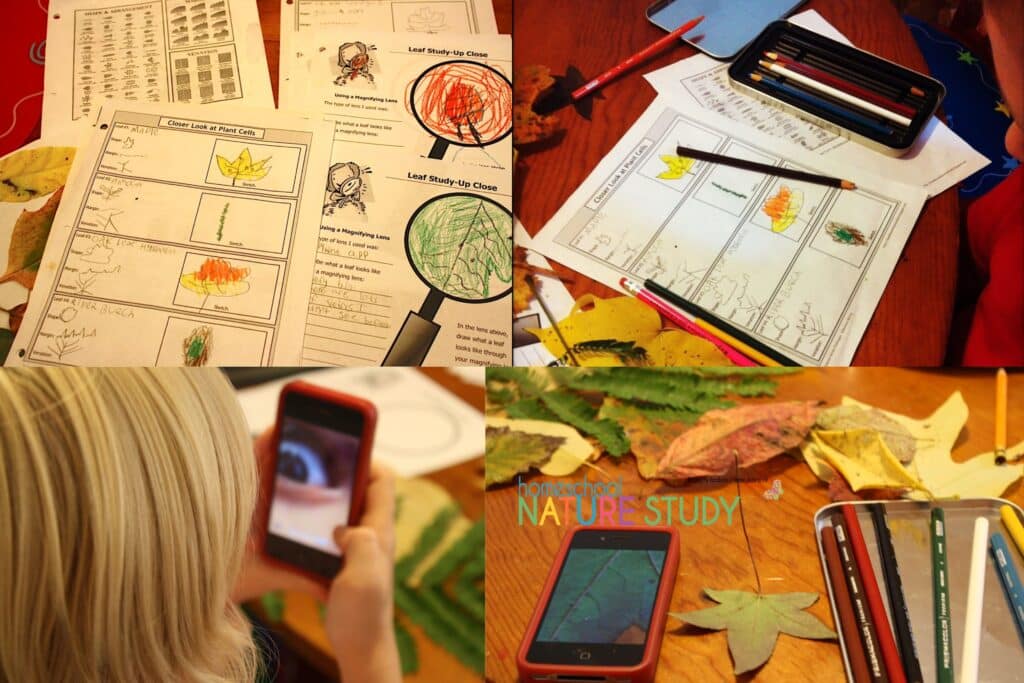
Eldest boy compared four different leaves, referencing the shape & arrangement, margins and venation page. That’s when he said, while sketching each leaf…
“That’s the most fun leaf study I’ve ever done.” ~ 12-year-old
Middle Girl discovered you can turn the ‘lens’ around and look at yourself up close!
Technology and nature study.
For the record, we did find our little, plastic magnifying lens (after our study).
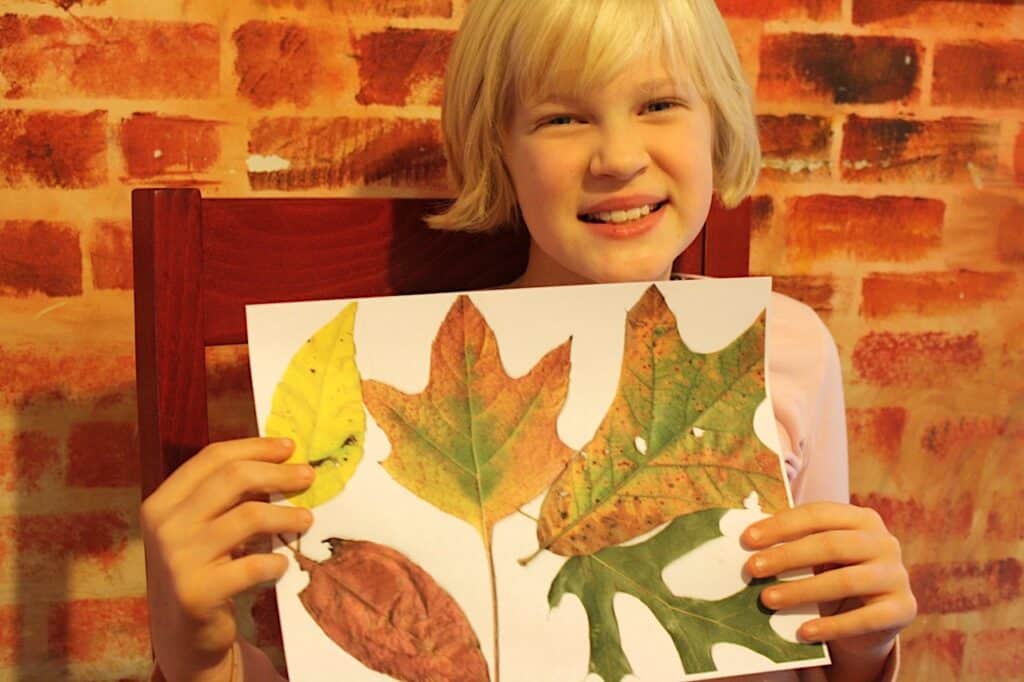
As a bonus, we copied some of our favorite leaf colors for our nature journals.
There are many fun art and nature journal ideas for trees and leaves listed below as well!
So many things we discovered by taking the time to look up close! Thanks to an October of beautiful fall colors and Handbook of Nature Study.
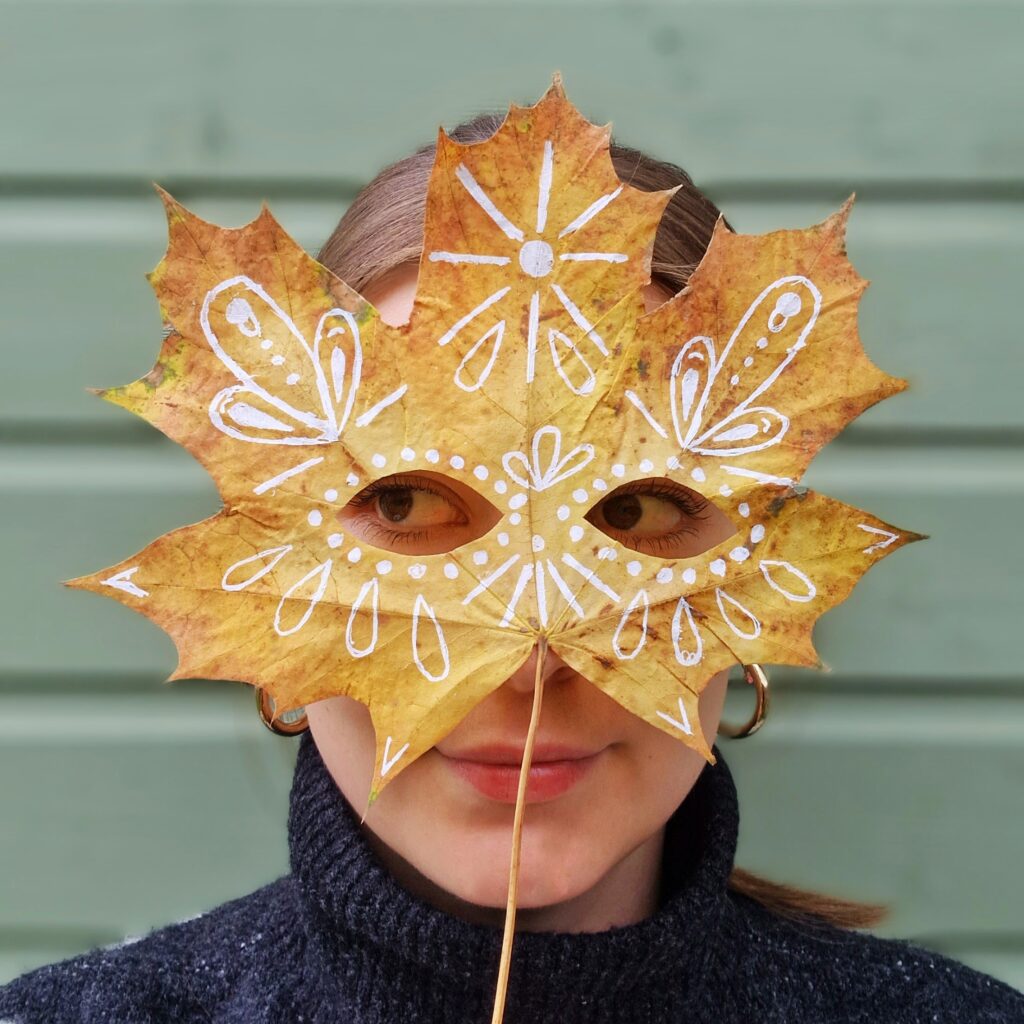
Leaf Resources for Homeschool Nature Study Members
Members have all of these leaf studies to enjoy!
- Outline the Shape + Leaf Coloring Page
- Leaf Masks Nature Craft Activity
- Learning Leaf Parts
- Fall Leaf Study Grid
- Under the Fallen Leaves Autumn Fun
- Fall Color Walk with Printable Color Cards
- Learning About Leaves Outdoor Hour Challenge
- Seasonal Tree Autumn Comparisons
- Outdoor Mom – September and October
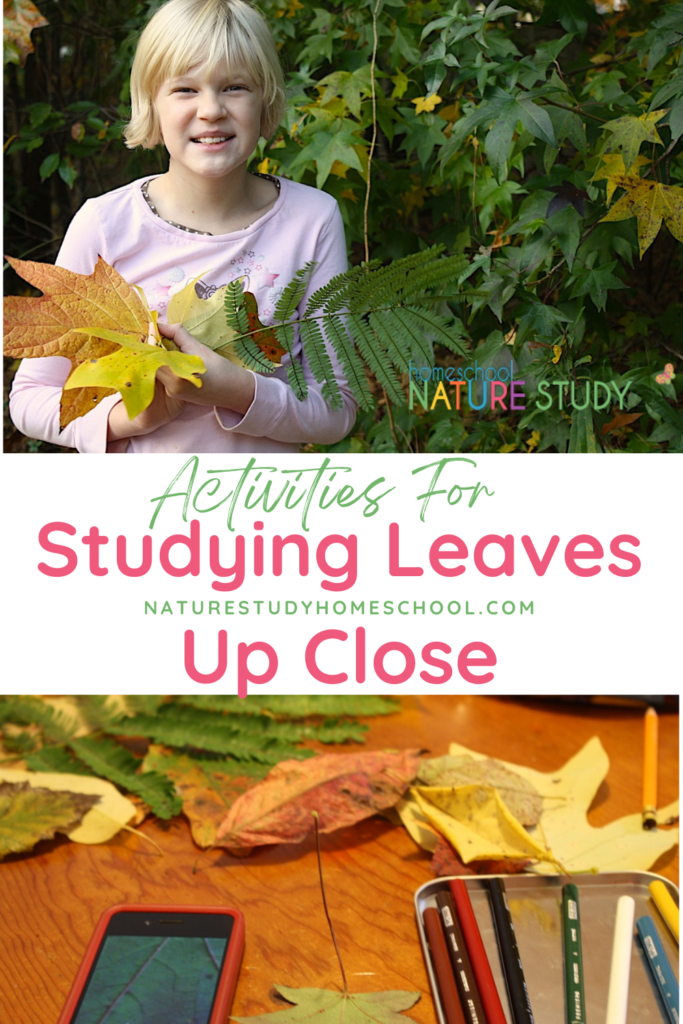
You will find hundreds of homeschool nature studies plus all the Outdoor Hour Challenges in our Homeschool Nature Study membership. There are 25+ continuing courses with matching Outdoor Hour curriculum that will bring the Handbook of Nature Study to life in your homeschool! In addition, there is an interactive monthly calendar with daily nature study prompt – all at your fingertips!
Find Out More About Homeschool Nature Study Membership!
Be inspired. Be encouraged. Get outdoors!




